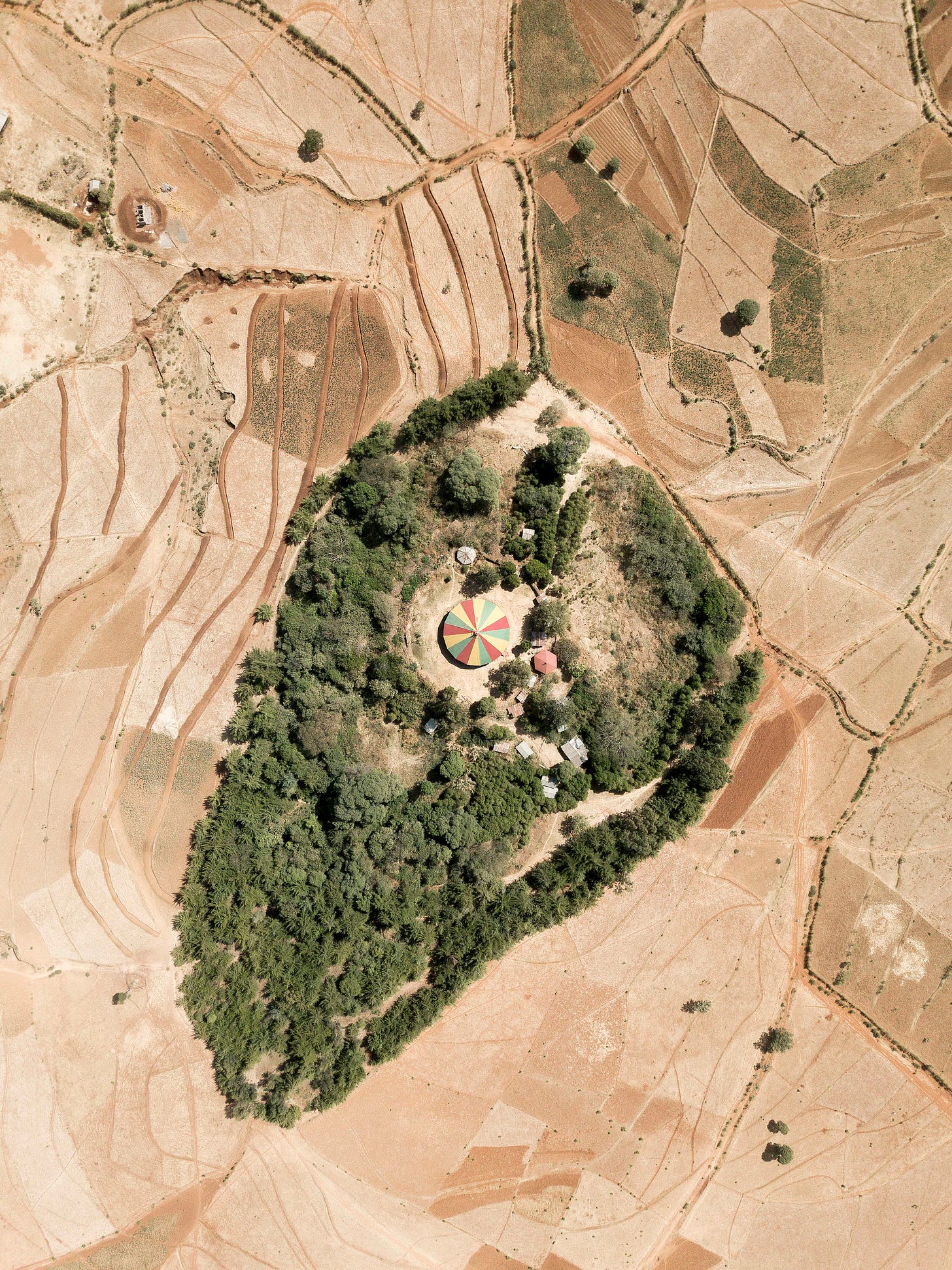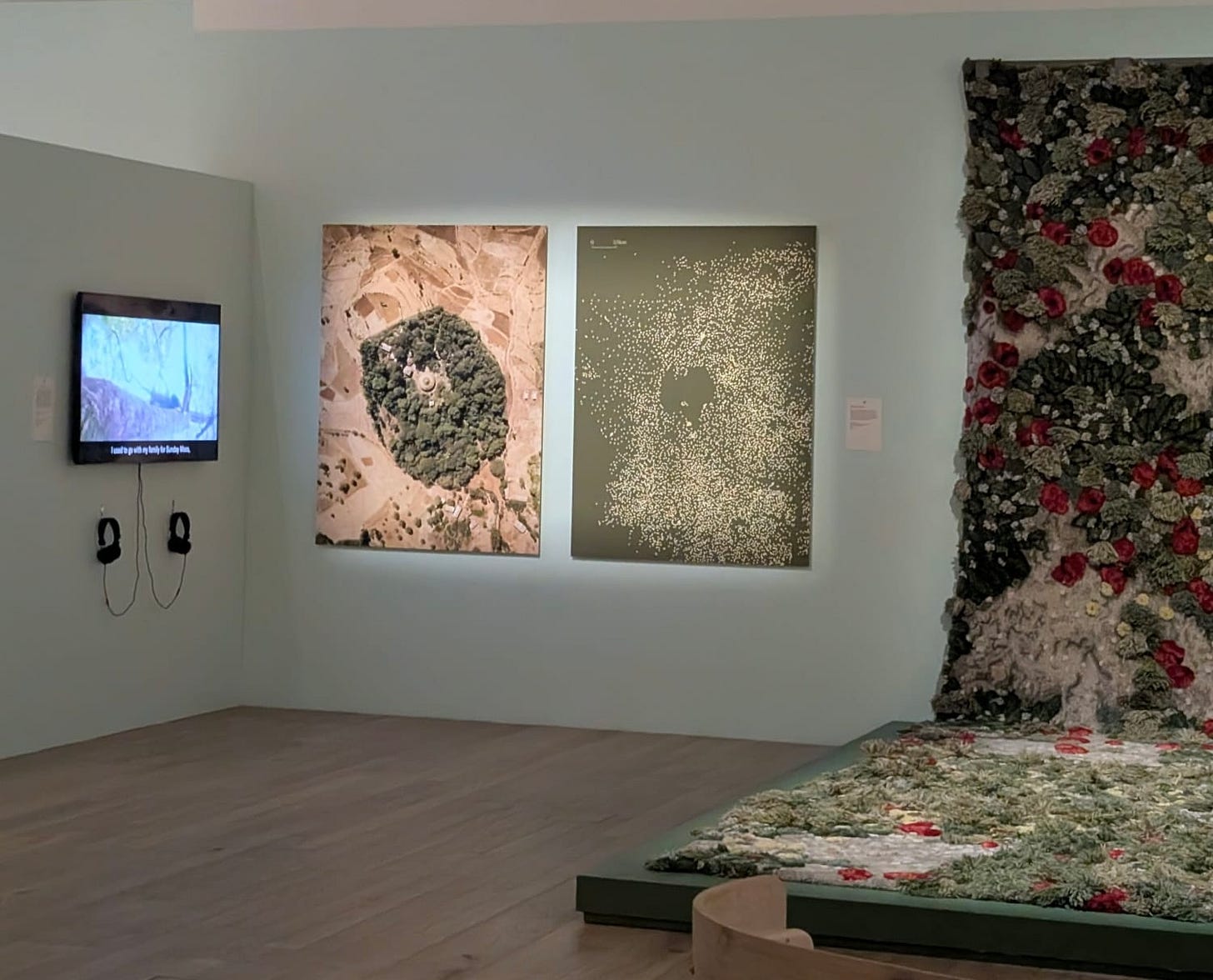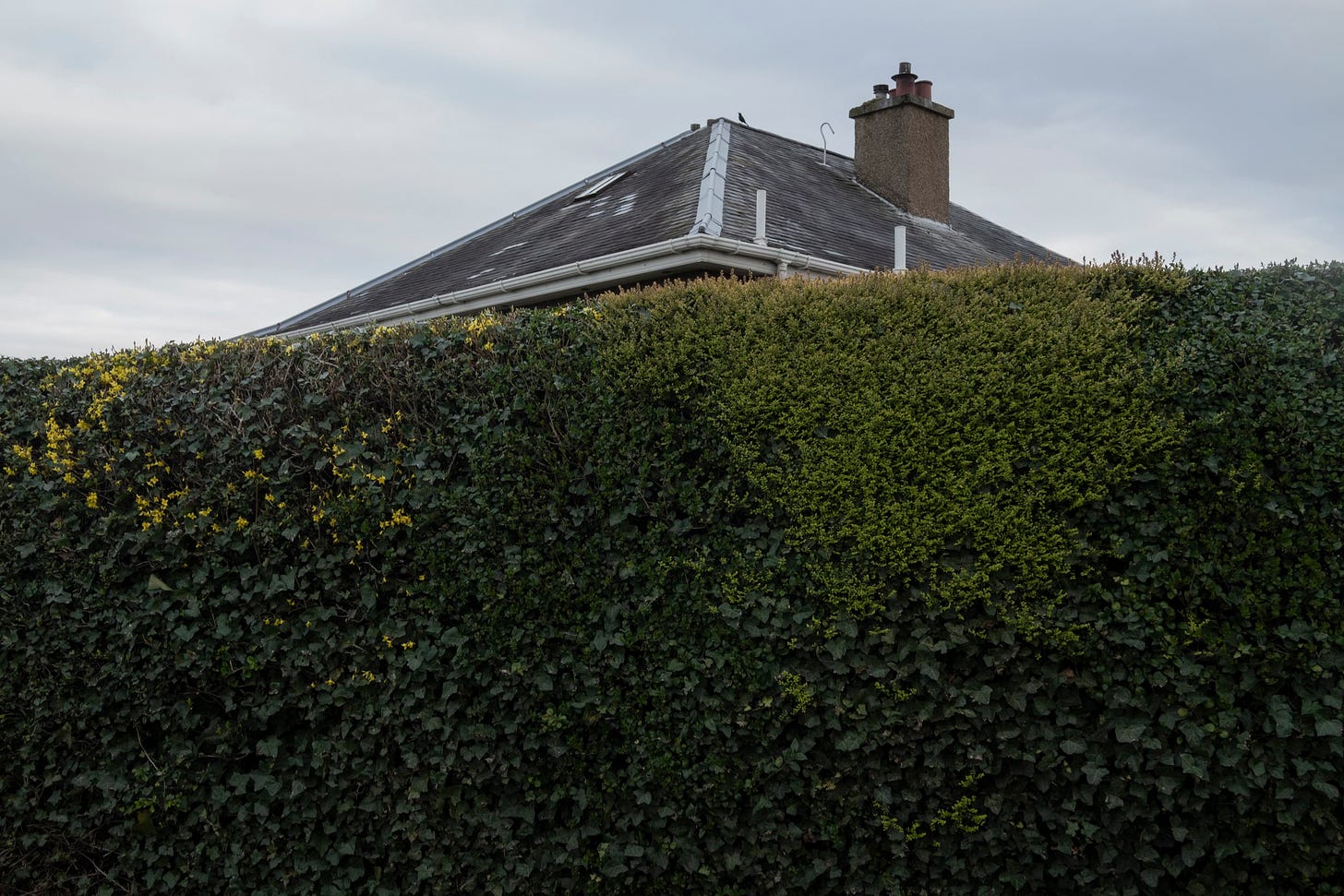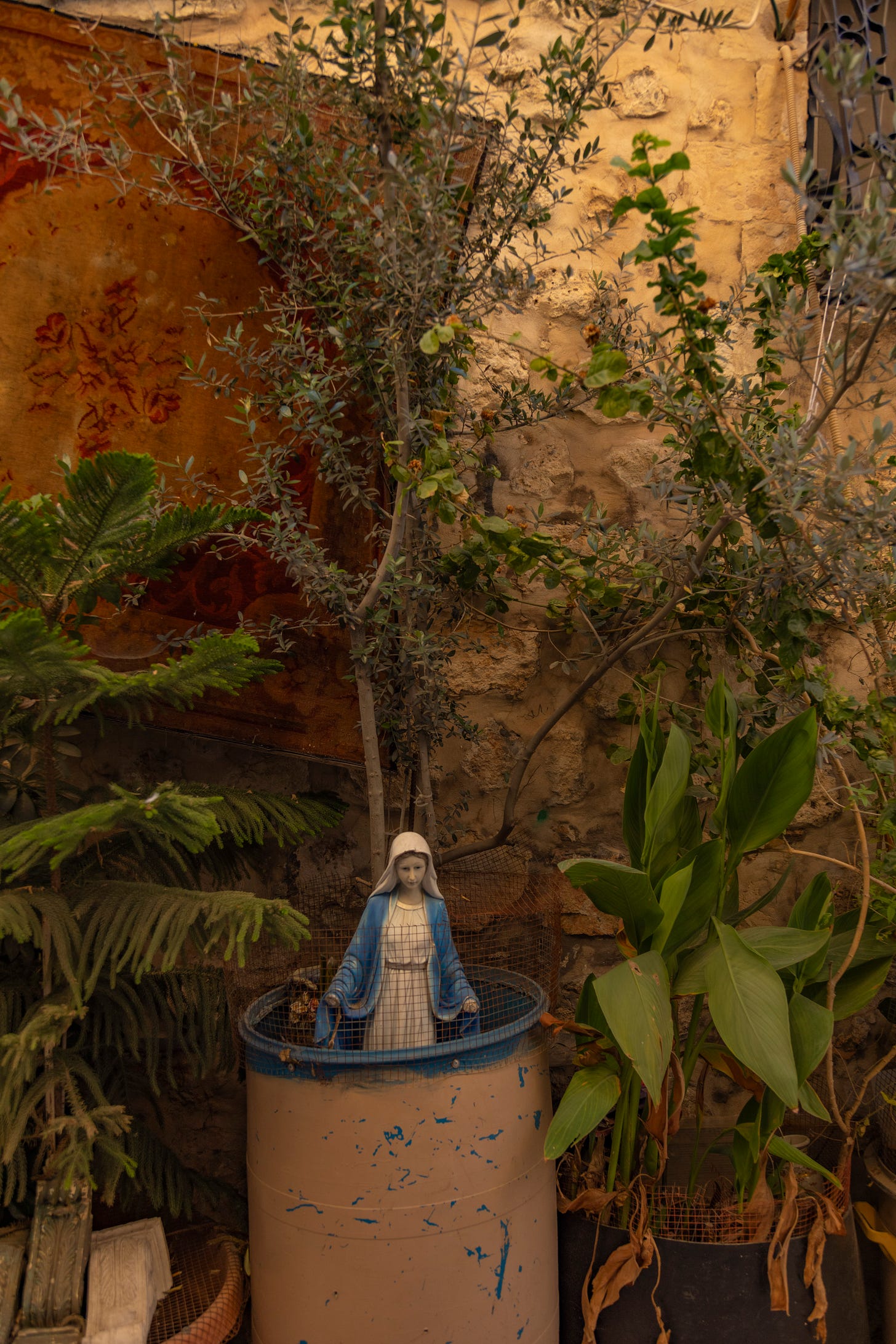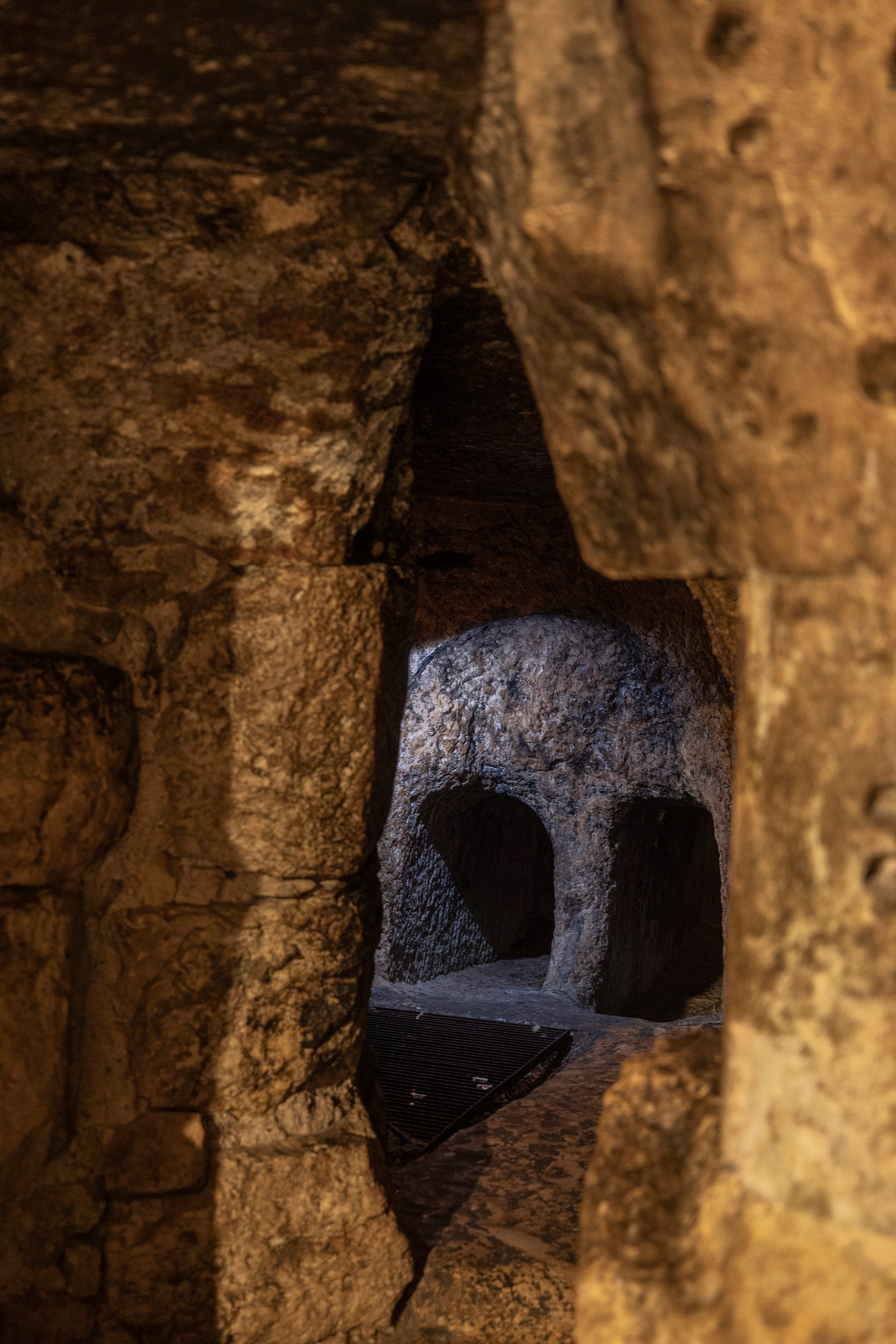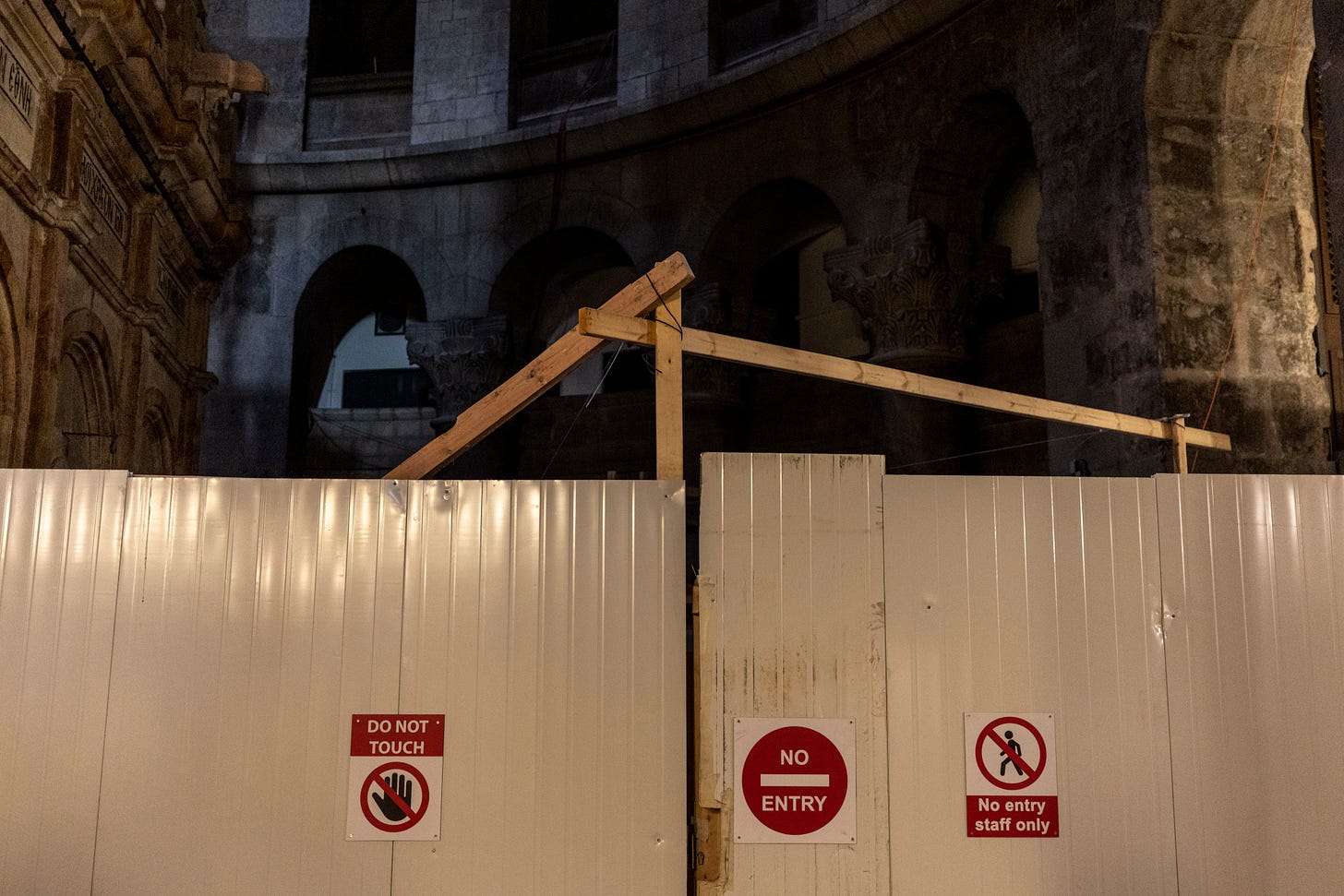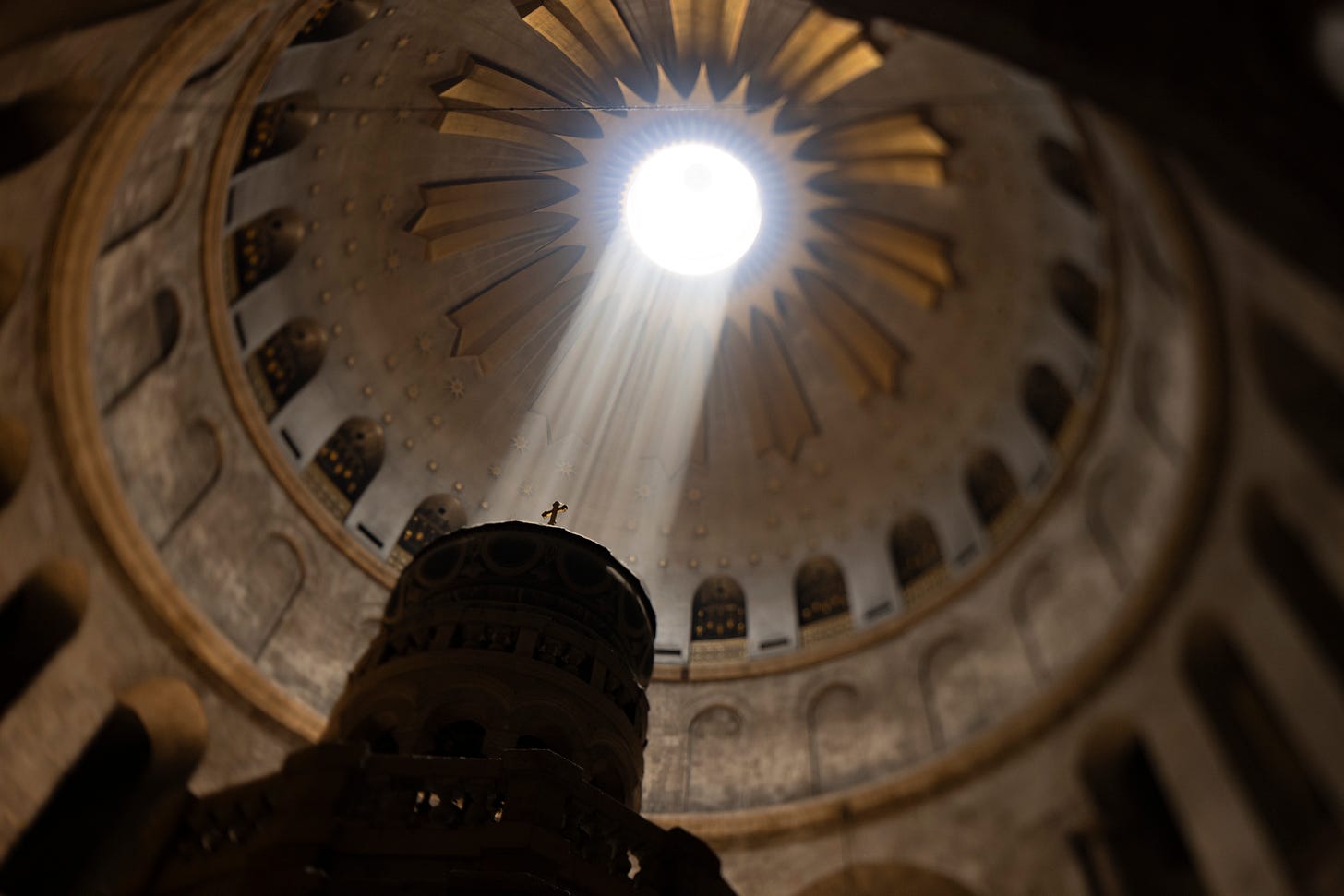Let There Be Garden
A New Exhibition Digs Deep Into Soil and Soul
A new show and a recent discovery related to a 2,000-year debate reveal that human history will always be rooted in and around gardens.
“Think like a gardener, not an architect: design beginnings, not endings.”
Brian Eno
Dundee’s expansion as a city in the Industrial Revolution was based on plants – or more accurately, the textiles manufactured from plants, such as jute, which was produced in the port town at a global scale until the 1970s. And now, at the site of former gasworks by a dock, plants will again feature in Dundee’s economy, with a new Eden Project – a garden of horticulture, culture and retail – due to rise.
For me, more personally, Dundee is a place of beginning – my literal beginning, where a doctor (now a lord), plucked me from the womb into the city’s fragrant air.
My arrival there last Thursday was a little less dramatic. I was invited to the launch of the new Garden Futures exhibition at the V&A Dundee as an exhibiting artist. This show has toured Germany, Scandinavia, The Netherlands and has now arrived in the UK.

There is so much to praise about the exhibition, which includes surprises at every turn, but a foundational theme I want to explore here, because I have done so in my photographic work and is where the show begins, is paradise.
Sacred Space
In their introductory essay to the show, Viviane Stappmanns, Marten Kuijpers and Maria Heinrich write: ‘The notion of exclusion defines the garden – quite literally. The word “paradise” originates from an ancient Persian word meaning “walled enclosure”, and even today, most dictionary definitions suggest that what actually constitutes a garden is its separation from its surroundings by some kind of enclosure.’
The garden, then, is the natural unit of human civilisation, the smallest area we can tend and care for within the wilderness. The sacred plot outside our cave.
During Covid lockdowns, our gardens became sanctuaries. Gardeners’ World viewers said it every week as they sent in their videos: their gardens were their ‘saving grace’ or ‘salvation’. They were also paradises from which others were generally excluded.
At the time, I spent months documenting the hedges that surround gardens inside which people, particularly in Britain, have self-isolated for decades. This felt a perfect follow-up to my work on Ethiopian sacred groves, some of which features in Garden Futures. Both lands share a common origin story, the garden of paradise in the Bible. Whereas those church forests, miniature Gardens of Eden and important nature preserves, are spaces to gather, the suburban British gardens of lockdown became places of retreat.
The Garden Futures show is broad in scope, and naturally begins where Western thought began, with Adam and Eve – the first humans, the Bible tells us, to be gardeners, to name animals and be fruitful. Western thought actually begins East of Eden. The show does not linger long here, trying to do justice to the vast topic and with a display of over 400 objects, so I thought I could digress.
Eden echoes throughout the whole Bible. To my delight, topiary makes Satan angry as he accuses God of ‘hedging in’ faithful Job. How dare you protect him with a topiary of love! There are echoes of Eden’s love story too in the intimate beauty of lovers in Song of Songs. The lavish, floral carvings in the Old Testament tabernacle or sacred tent, evoke, you guessed it, the garden. Yet there is one more obvious biblical garden not covered in the show, but which has made some ripples in recent headlines.
Seeing the Wood Around the Tree
During the COP26 summit in Glasgow, the Guardian published a church forests article of mine with a short overview of the tree as biblical symbol. But they chopped out a vital detail – can you spot their cut?
The symbol of the tree is at the heart of the Christian story, from the tree of life standing in the Garden of Eden in Genesis to its redemptive role in Revelation, bridging the river of life and bearing fruit for the healing of nations.
The central symbol of the faith, the Cross – the tree of curse that becomes a tree of life – is missing. I had included it, but the sub-editor probably felt it was too didactic, offensive, repulsive, oxymoronic, weird or wordy. This tree is essential to the Christian story, though. An Orthodox anaphora of St Cyril articulates it better than most:
A weak tree carried Him who carries heaven and earth. A narrow grave contained Him, before whom heaven and earth tremble, when He was buried in it.
Anaphora of St Cyril
While the Guardian had dropped the Cross, the symbolic tree of Christian faith, I realised I too had cut out a central element of the story – the garden around the tree!
There Was a Garden
Jesus’ dead body is buried in the garden tomb, and then when he rises, according to John’s version, he is mistaken for the gardener. The main point of John’s gospel is the end of death, but he bangs on about gardens throughout. His gospel famously opens ‘In the beginning . . .’, God tabernacled with us reprising Genesis, and his later book of Revelation culminates in a garden city, the New Jerusalem. For John, as in the rest of the Bible it seems, paradise, where God dwells, is garden-shaped.
Recent news stories have brought to life long-running debates about the ground zero of Christian history. It took over 1,700 years and a Muslim sultan to orchestrate a peaceful Status Quo in Jerusalem whereby six key denominations of Christianity would agree to disagree amicably about the key sites of Christian history in the Holy Land, including the location of the garden tomb.
Some reformed Christians, not included in the Status Quo, decided that the empty tomb could not be under their most sacred church, the Church of the Holy Sepulchre, as many claimed, but instead around half a kilometre away, outside the city. This was because they noted 1. that there was no garden at the church, 2. the church was surrounded by buildings and 3. they had found a cliff that looked a bit like a skull elsewhere. The non-denominational organisation that runs the Garden Tomb site today does not claim it is the historic site but says it serves as a useful illustration of what the site would have been like – i.e. a garden.
But what if you grabbed a shovel and dug below the Church of the Holy Sepulchre? If you weren’t arrested, what would you find?
Digging for Paradise
Back in 2022, I spent three dawns and three dusks in that church, as incense wafted and chants mingled and battled in the air. There was no body, and were also no plants in sight either. People had joked to me that Christians were so dysfunctional they needed a local Muslim man to lock and unlock the church. The Nuseibeh family continue to guard the key but my Jewish tour guide saw it differently. The fact the factions can co-exist is a miracle, she said, and a model of how warring parties could work together. I loved that the church was free to enter and open to all, unlike many famous sites we visited on that epic journey.
Beside the empty tomb structure I noticed an ugly building site, but it was only last month that I found out what they had been doing there – among other things, trying to find the site of the Garden Tomb. Professor Francesca Romana Stasolla at Sapienza University of Rome was carrying out archaeobotanical analysis of soil from beneath the church floor. This was part of the first major restoration since 1818, apparently because the different sects who manage the church could not agree between laminate or tiles as flooring.
Then, in March of this year, the Times of Israel reported that some 2,000 years ago olive trees and grapevines likely grew on the land where the Church of the Holy Sepulchre stands today. Professor Stasolla is quoted in the article:
The Gospel mentions a green area between the Calvary and the tomb, and we identified these cultivated fields.
Perhaps the Church of the Holy Sepulchre is indeed a paved paradise of the past. Certainly it continues to hold, now more than ever, the story of that garden.
End At The Beginning
There is dignity is toiling in the earth, and gardens have deep spiritual roots that reach down to the very core of the human existence, across cultures. If you doubt this, the show at the V&A Dundee is a great place to start again, in the beginning, and to consider all the ways we have been influenced, consciously or not, by these origin stories.
All photographs in the article © Kieran Dodds, unless otherwise stated.



